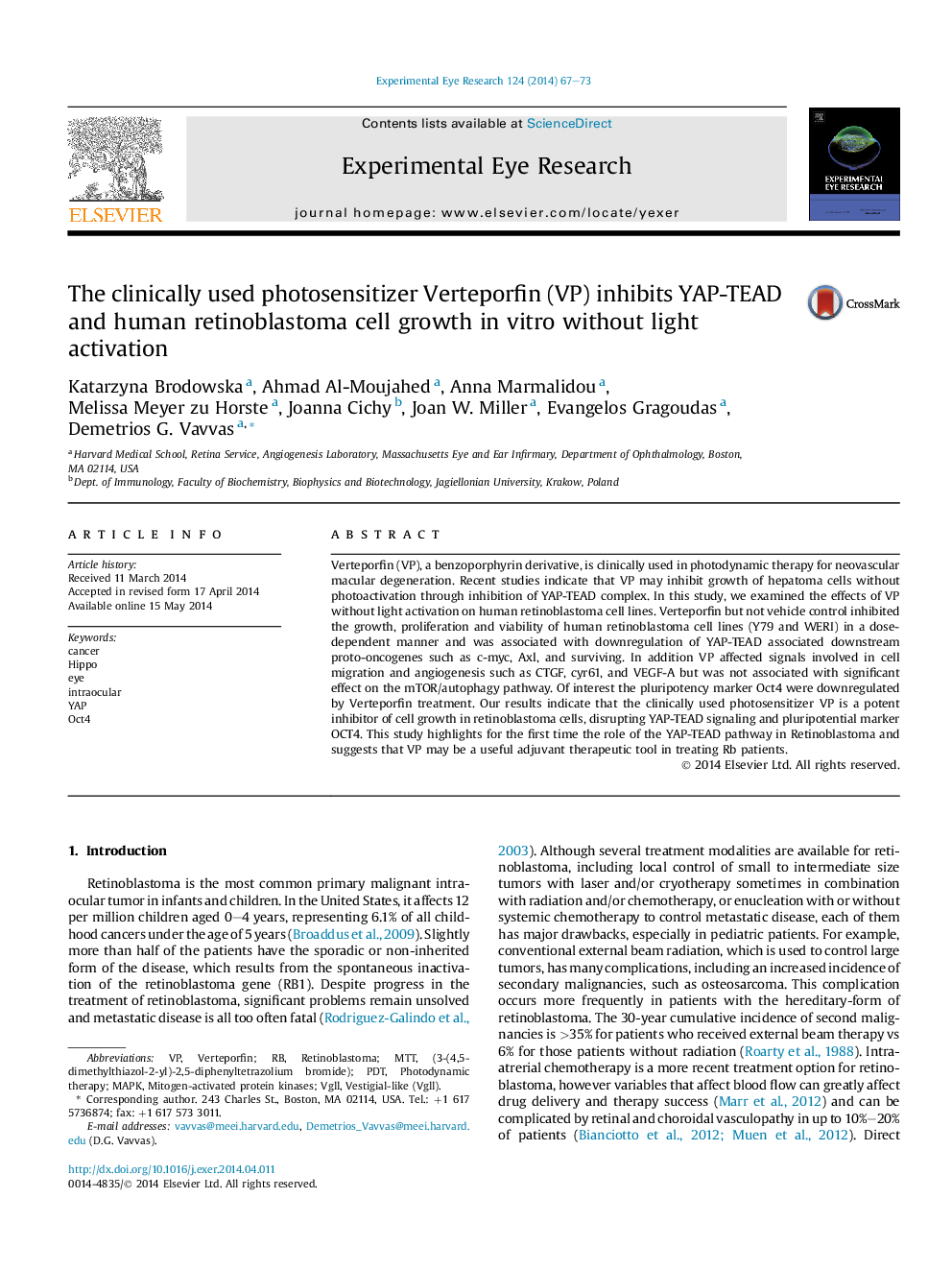| Article ID | Journal | Published Year | Pages | File Type |
|---|---|---|---|---|
| 6196894 | Experimental Eye Research | 2014 | 7 Pages |
â¢Verteporfin (VP) without photo-activation inhibits retinoblastoma cell lines.â¢Verteporfin down-regulates YAP-TEAD controlled protooncoges myc, Axl and survivin.â¢Verteporfin down-regulates YAP-TEAD controlled cell migration and angiogenesis factors cyr61, CTGF and VEGF-A.â¢Verteporfin down-regulates pluripotency factor Oct4.
Verteporfin (VP), a benzoporphyrin derivative, is clinically used in photodynamic therapy for neovascular macular degeneration. Recent studies indicate that VP may inhibit growth of hepatoma cells without photoactivation through inhibition of YAP-TEAD complex. In this study, we examined the effects of VP without light activation on human retinoblastoma cell lines. Verteporfin but not vehicle control inhibited the growth, proliferation and viability of human retinoblastoma cell lines (Y79 and WERI) in a dose-dependent manner and was associated with downregulation of YAP-TEAD associated downstream proto-oncogenes such as c-myc, Axl, and surviving. In addition VP affected signals involved in cell migration and angiogenesis such as CTGF, cyr61, and VEGF-A but was not associated with significant effect on the mTOR/autophagy pathway. Of interest the pluripotency marker Oct4 were downregulated by Verteporfin treatment. Our results indicate that the clinically used photosensitizer VP is a potent inhibitor of cell growth in retinoblastoma cells, disrupting YAP-TEAD signaling and pluripotential marker OCT4. This study highlights for the first time the role of the YAP-TEAD pathway in Retinoblastoma and suggests that VP may be a useful adjuvant therapeutic tool in treating Rb patients.
